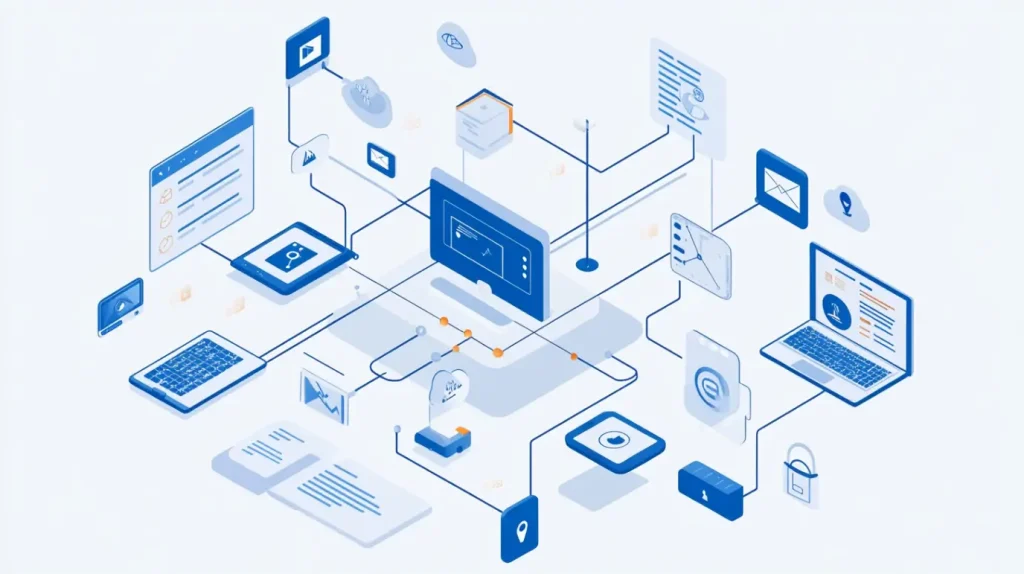Do you have a website, a landing page, or an online store that gets visitors, but you wish more of them would take that next step? Whether it’s making a purchase, signing up for a newsletter, or filling out a contact form, getting users to act is crucial. This is where your conversion rate comes in, and improving it is one of the most effective ways to grow.
This guide will simply explain what a conversion rate is and provide 8 practical, easy-to-understand tips with examples to help you turn more visitors into valuable customers and subscribers.
First, What Is a Conversion? And What’s a Conversion Rate?
A conversion is any desired action you want a visitor to take. It could be:
- Buying a product
- Submitting a form
- Subscribing to your email list
- Downloading a file
- Starting a free trial
Your conversion rate is simply the percentage of visitors who complete that action. For example, if 100 people visit your page and 2 of them sign up, your conversion rate is 2%. The higher, the better!
8 Powerful Tips to Increase Your Conversion Rate:
- Have a Clear and Compelling Call-to-Action (CTA)
- What it is: Your CTA is the button or link that tells users what to do next. It needs to be obvious, clear, and persuasive.
- Why it works: Vague or hidden CTAs confuse visitors. A strong CTA removes guesswork and encourages action.
- Example: Instead of a generic “Submit” button on a form, use action-oriented language that highlights the benefit.
- Before: Submit
- After: “Get Your Free Guide Now!” or “Start Your 14-Day Free Trial”
- Simplify Your Forms
- What it is: Reducing the number of fields a user has to fill out to convert.
- Why it works: Every extra field you ask for creates friction and gives users another reason to abandon the process.
- Example: If you want people to subscribe to your newsletter, do you really need their first name, last name, and phone number? Probably not. Just asking for their email address can dramatically increase sign-ups. For an online store, offering a “Guest Checkout” option that requires less information is a great way to reduce cart abandonment.
- Build Trust with Social Proof
- What it is: Showing visitors that other people trust and value your brand or product.
- Why it works: People are heavily influenced by the actions and opinions of others. It reduces their perceived risk.
- Example:
- Display customer testimonials or reviews with star ratings.
- Showcase logos of well-known companies you’ve worked with.
- Use dynamic notifications like, “Sarah from New York just bought this!” to create a sense of popularity.
- Improve Your Page Load Speed
- What it is: How quickly your webpage loads for a visitor.
- Why it works: In our fast-paced world, even a one- or two-second delay can cause visitors to get frustrated and leave your site before they even see your offer.
- Example: An e-commerce site has beautiful, high-resolution product photos, but they haven’t been optimized (compressed) for the web. The product pages take 7 seconds to load. A potential customer gets impatient, hits the “back” button, and buys from a competitor’s faster site.
- Optimize for Mobile Users
- What it is: Ensuring your website looks great and is easy to use on smartphones and tablets.
- Why it works: A significant portion of online traffic comes from mobile devices. If visitors have to pinch-and-zoom to read text or struggle to tap small buttons, they will leave.
- Example: A restaurant’s website has a “Reserve a Table” button, but on mobile, it’s tiny and placed too close to other links. Users accidentally tap the wrong link, get frustrated, and decide to just call another restaurant instead. Making buttons large and easy to tap is a simple mobile optimization fix.
- Use High-Quality Images and Videos
- What it is: Using professional and appealing visuals to showcase your product or service.
- Why it works: People are visual creatures. Great images and videos help them understand what they’re getting and build an emotional connection. They can also answer questions that text cannot.
- Example: An online store selling backpacks has one or two blurry photos. A competitor sells a similar backpack but shows crisp, clear photos from multiple angles, a video of a person using the backpack, and close-ups of the zippers and materials. The competitor’s page will almost certainly have a higher conversion rate.
- Write Clear and Persuasive Copy (Text)
- What it is: The words on your page. It should be easy to understand, address your audience’s needs, and focus on benefits, not just features.
- Why it works: Good copy convinces the user that your offer is the right solution for their problem.
- Example:
- Feature-focused (Weak): “Our software has a dbt integration.”
- Benefit-focused (Strong): “Connect all your data in minutes! Our one-click dbt integration lets you see the whole picture, effortlessly.”
- Test Your Changes (A/B Testing)
- What it is: A method of comparing two versions of a webpage against each other to see which one performs better.
- Why it works: Instead of guessing what will work, A/B testing provides real data on what your audience responds to.
- Example: You’re not sure if a red or green “Buy Now” button would work better. You set up an A/B test where 50% of your visitors see the red button and 50% see the green one. After a week, you see that the green button resulted in 15% more clicks and purchases. Now you have a data-backed reason to use the green button.
Conclusion: Start Small, Measure Your Impact
Increasing your conversion rate doesn’t require a complete overhaul overnight. It’s about understanding your users’ journey and systematically removing any friction that stops them from taking action. Pick one or two of these tips to implement this week. Try simplifying your contact form or adding a customer testimonial to your homepage. Then, watch your analytics to see what impact it has. Small, consistent improvements are the key to unlocking significant growth.



